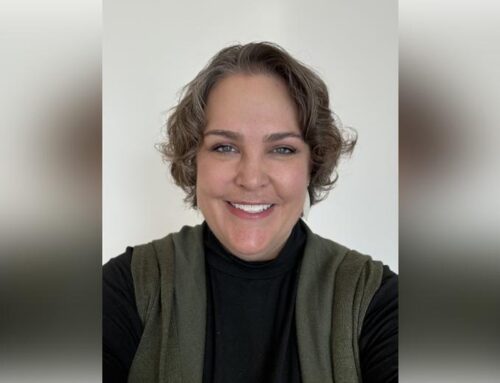Last summer, the NHLC Creation Care team began planning a garden to attract and nourish pollinators in our neighborhood. The garden is now planted and waiting to bloom!
The pollinator gardeners, Gregg Kelley, Erika Olson, Avis Jensen, Laura Bretheim, and Jan Myers, knew that the garden would be on the 53rd Street side of the building, but, as novices, were unsure of how much garden we could manage or what we wanted to plant. We visited gardens at churches, homes, and parks in the area and met with a gardener from Metro Blooms to understand the ins and outs of preparing the area and planting. The Creation Care team hosted a forum lead by Master Gardener, Beth Beck. This groundwork led to a decision to plant the corner slope between the alley and the walk to the side door. Beth Beck introduced us to Master Gardener, Kate Netwal, whom we hired to design a plan that considered color and bloom for all-season interest, hardiness (of course!), plant heights that work on the slope, and harmony with existing church plantings.
We accepted the plan in January and spent the rest of the winter getting ready to plant: ordering plants, getting a soil test, and making sure there were no utility impediments. Finally, in April and May we could dig in! Gregg rototilled the garden area and we all pitched in to complete soil preparation. On May 24, our big plant order arrived, and we spent the morning getting the plants in the ground and mulched.
What’s in the garden?
Here are the plants you can see in the pollinator garden now. The first ten are in order from top to bottom of the slope:
- Hydrangea “Pinky Winky”
- Joe Pye Weed “Baby Joe”
- Liatris (blazing star) “Floristan Violet”
- Monarda (bee balm) “Grand Mum”
- Rudbeckia “American Gold Rush” (black-eyed Susan)
- Nepeta (catmint) “Junior Walker”
- Sedum “Class Act”
- Salvia “Sensation Deep Rose”
- Geranium maccrorhyizum “Bevans”
- Ajuga “Chocolate Chip”
- Calamagrostis “Karl Foerster” feather reed grass (along alley—the same grass as planted by the church sign)
- Taunton Yew (along the steps—to echo yews near the front of the church)
Why are pollinators important?
A pollinator is anything that carries pollen from one plant to another, fertilizing plants and allowing them to make fruit or seeds. Often we think of bees as our main pollinators, but there are a variety of other pollinators, including ants, flies, beetles, birds, bats, and other small mammals! Pollinator health is critical to our food system and the diversity of life across the world. It is estimated that one out of every three bites of food is the result of a pollinator!
Each of us can contribute to pollinator friendly environments, by doing the following:
- Plant flowers with pollen and nectar.
- Create habitat and nesting sites for pollinators.
- Eliminate the use of pesticides that are dangerous to pollinators.
Here are some informative websites for learning more about pollinator gardens and establishing one of your own:
- http://bwsr.state.mn.us/residential-pollinator-habitat
- https://extension.umn.edu/lawns-and-landscapes/flowers-pollinators
- https://www.pollinator.org/pollinators
- https://www.fws.gov/pollinators/ (This site has some ideas and links for kids to get involved!)
How can you help with our church’s pollinator garden?
We’d love some help with weeding and watering! Let us know if you can help keep the pollinator garden and other plantings at Nokomis Heights healthy and looking good. Contact Gregg Kelley (242gkelley@gmail.com) or the NHLC office (office@nokomisheights.org) to volunteer!



